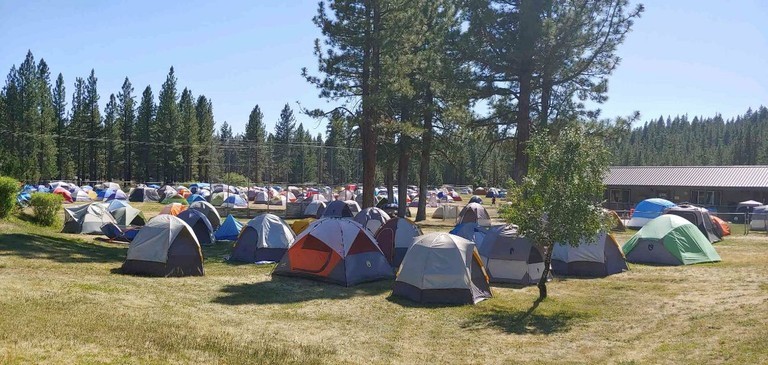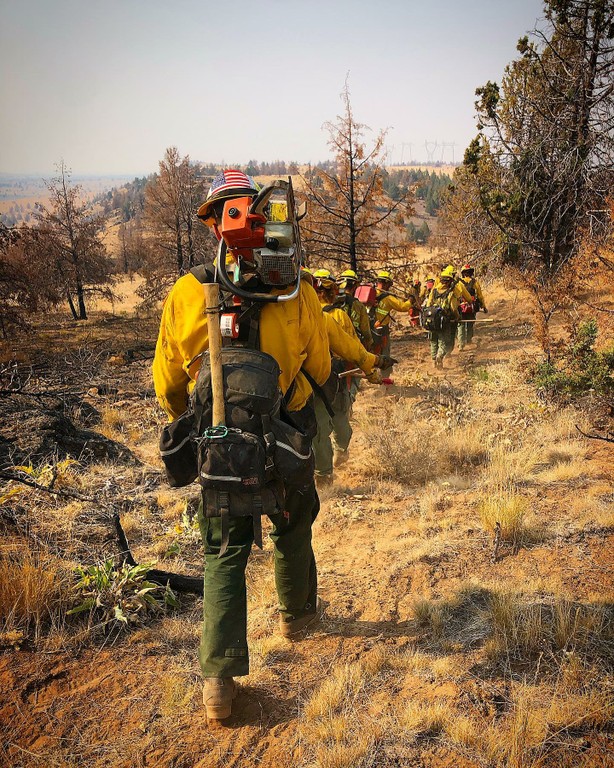OKLAHOMA CITY – Oklahoma Forestry Services (OFS) sent personnel and equipment to support numerous western wildfires throughout the summer, providing skills and expertise in firefighting operations and incident management. In turn, these responders were afforded opportunities to gain experience and strengthen their qualifications, which will benefit wildland firefighting and management of other emergency incidents in Oklahoma.
“The low fire threat in Oklahoma through the summer placed us in a position to assist with wildfires in several other states,” said Mark Goeller, State Forester and Director of Oklahoma Forestry Services. “Not only were we able to support numerous states in trouble, but it also provided our personnel the opportunity to improve their wildland firefighting and incident management skills. That additional experience allows Forestry Services personnel to provide a higher level of service when managing wildfire and other incidents when things get bad in Oklahoma.”
Qualifications for working on a wildfire incident
Oklahoma Forestry Services, like all state forestry agencies, works through a formalized partnership with the USDA Forest Service to provide personnel who are qualified in various positions within the Incident Command System (ICS). The ICS provides responders a highly organized method of managing incidents including wildfires. Several OFS personnel serve on National and Regional incident management teams, which manage all aspects of high-complexity wildfires and all-hazards incidents.
The National Wildfire Coordinating Group develops qualification standards for wildland fire positions which are adopted by federal, state, and local wildland firefighting agencies. These standards include training, experience levels, and physical fitness requirements. All staff that are deployed must have the training and certification for their assigned position and have obtained their Incident Qualification Card (commonly referred to as a red card).
There are many roles within a wildfire incident. The command and general staff consist of an incident commander, public information officer, safety officer, and liaison officer, as well as section chiefs for operations, planning, logistics and finance/administration. The operations section consists of wildland firefighters of various types, air operations and supervisory roles. Planning section staff provide services such as producing the Incident Action Plan, collecting and analyzing situational data, providing mapping/spatial information, maintaining incident documents and files, human resources, and check-in and demobilization of staff. The logistics section has roles that handle provisions for facilities, services and material in support of the incident, like radio communications, medical, food, supply procurement, and base/spike camp management. Finally, finance/administration personnel are responsible for all financial, administrative and cost analysis for the incident.
Deployment
Through their home agencies, qualified personnel place themselves on the Interagency Resource Ordering Capability availability list. During their availability period, they must be ready to immediately dispatch for at least 16 days. Each available individual has their firefighting line gear (or other equipment necessary for their specific assignment) and their personal gear bag packed and ready to go. Frequently on western fires, incident management teams stay in primitive camping situations during their assignment as many wildfire incidents are in remote areas with rough terrain where hotel accommodations do not exist. In large scale or complex incidents, camp life can be more comfortable with hot food service, temporary cell towers (used to support operations) and portable shower and restroom facilities. While assignments are demanding, the work is rewarding and with each assignment personnel work toward achieving new qualifications, which ultimately result in higher levels of expertise and responsibility.
Oklahoma Forestry Services Stays Prepared
Oklahoma Forestry Services had 34 people working in various capacities, and 17 firefighting vehicles deployed to wildfire details in Montana, Idaho, California, Washington, Utah, Arizona, Colorado, Alaska, Minnesota, Arkansas and Oregon over the past three months. Incident Management Teams typically work 16-hour days for two-week or longer assignments and then rotate out to rest before being reassigned. Most of the 34 OFS personnel were dispatched to two or more assignments.
OFS Personnel served in many types of ICS positions including: incident commander, operations section chief, public information officer, status check-in, personnel time recorder, ground support unit leader, task force leader, safety officer and operations branch director. Multiple employees achieved new qualifications levels while on out-of-state assignments. Personnel and equipment travelling out-of-state are funded though cooperative agreements with the federal government, allowing the benefit of training and gaining experience at no cost to the State of Oklahoma.
“In addition to honing our skills, another important reason we assist other states with wildfires when needed is that we know that at some point, they’ll be here to help us,” said Goeller.
Oklahomans only have to look back a few years to remember the extreme wildfire activity that took place in northwest parts of the state. During 2016 – 2018, OFS utilized incident management team personnel from nearly 40 states to help manage and suppress the catastrophic wildfires that burned more than 1.5 million acres of land, destroying livestock, homes and various types of infrastructure. The wildland firefighting world is in many ways a small community in which everyone helps everyone, knowing they may be next to need assistance. While wildfire activity in Oklahoma has been relatively mild over the past few years, Oklahoma Forestry Services continues to maintain a high state of preparedness for response.

